It’s August and the woodland edge garden has become a bit shady and dense; time for a bit of summer pruning. Multi-stem small trees like Corylus, Euonymus and Viburnum all throw up epicormic shoots and get congested, especially the hazel, whilst the understory plantings have finished flowering and look tall, bedraggled and invaded by the usual stinging nettles and docks (I have a corner for those where they’re supposed to stay put).
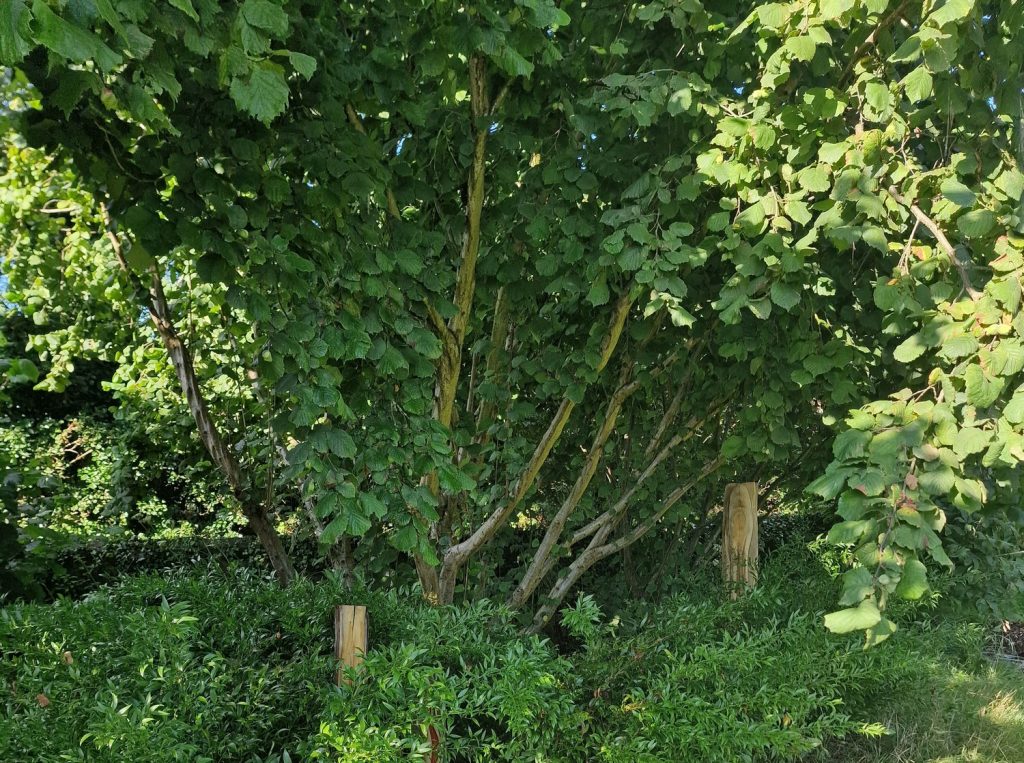
Time to let some light in. Most of these cuts require nothing more than a pair of secateurs and perhaps a pair of by-pass loppers (don’t use anvil types of either); we’re not doing any major works here. On the hazels, thinning out the new shoots from the base and the occasional clusters on the branches is easy; in less viewed areas I simply cut these arisings into shorter lengths and drop them on the ground. This mulching method is adapted from agroforestry and permaculture, a technique called ‘top and drop’ where trees (often nitrogen fixers) are grown to be used as mulch material to feed the soil. The larger arisings will get chipped. Hazels also have this habit of putting out leaf clusters all up the trunks and I clear those off too, along with any inward growing epicormic shoots that are congesting the upper canopy.
Last winter I had coppiced one of my hazels, leaving a few epicormic shoots to lead the new regrowth. This hazel now has shoots 2.5m tall, as you can see below:
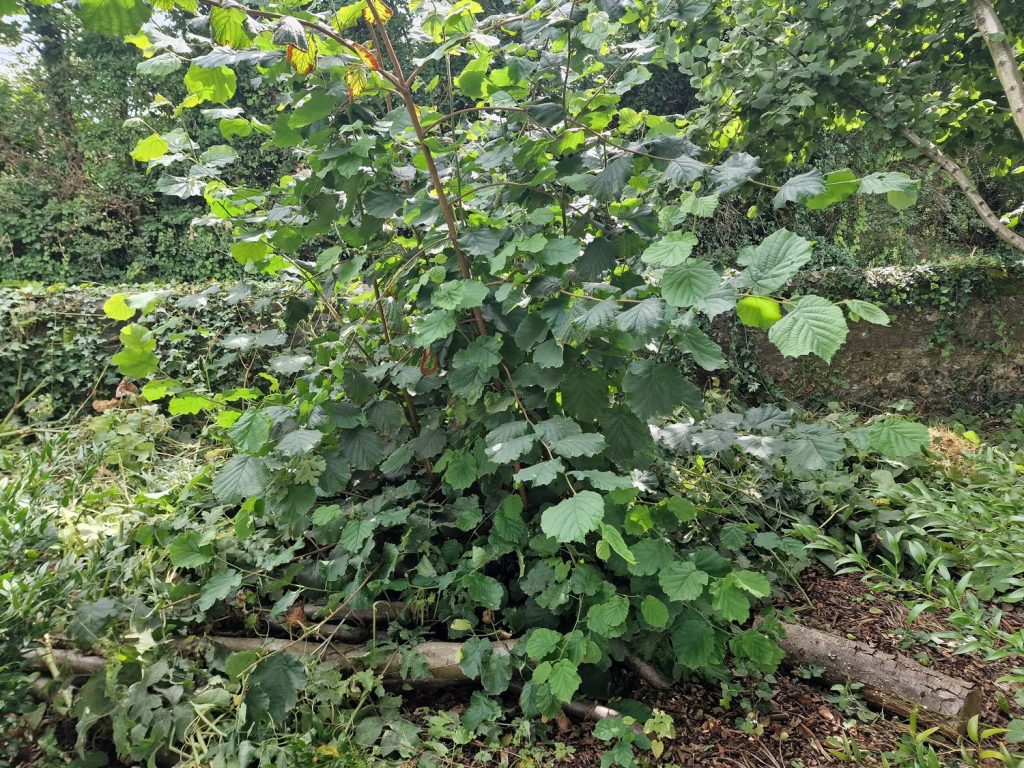
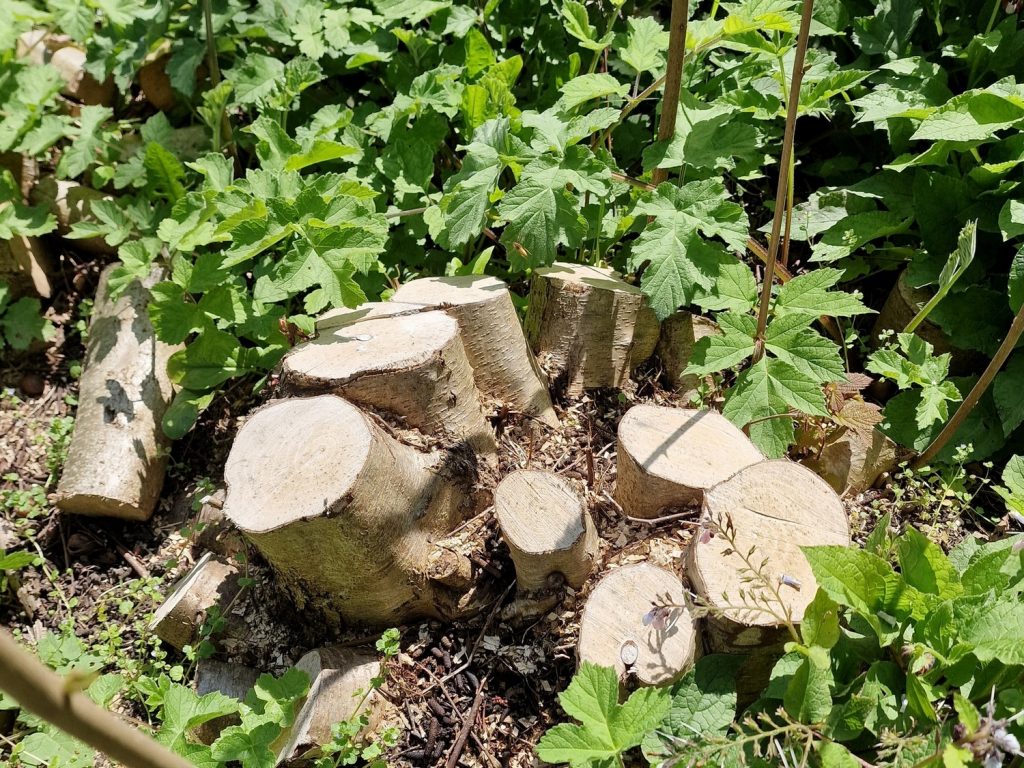
The next hazel to be coppiced, either next winter, or the winter after that, I have thinned and left some young shoots to form the new structure. This isn’t absolutely necessary and can make it harder to remove the old growth, but it does speed up the regrowth slightly. You can see the shoots I’ve left on the picture below:
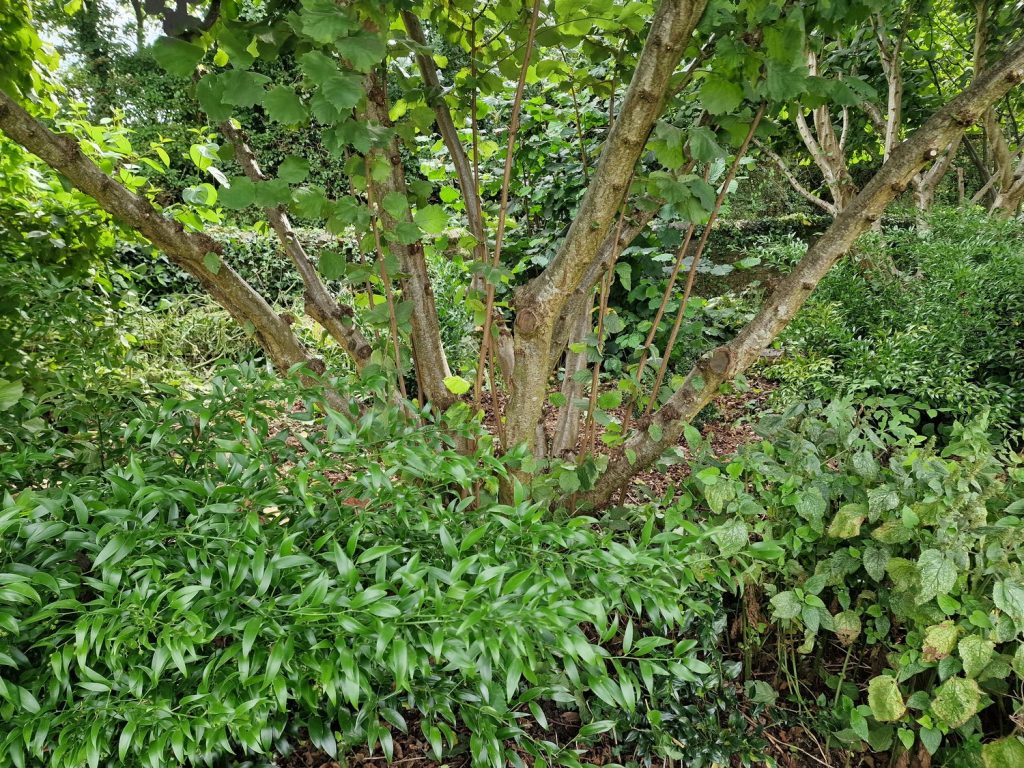
The underplanting is a mix of woodland perennials and evergreen shrubs, notably Danae racemosa, Alexandrian laurel. I love this plant with it’s glossy evergreen leaves and orange berries, it is also a tough, Mediterranean woodland plant and so adaptive in respect to climate change. It can be hard to come by though as it is slow growing. I also have a dwarf form of our native butcher’s broom, Ruscus aculeatus, which has a similar habit with red berries. For more information on the underplanting, please see my recent post, ‘The Woodland Edge Garden’.
Other trees I have in the woodland edge include Viburnum opulus, Euonymus europaeus, Amelanchier x lamarckii and a multi-stem Aesculus hippocastanum (horse chestnut). I also have a named variety cobnut, which produces wonderful nuts (if the squirrels don’t get them first) and an Aesculus parviflora, a small N American suckering shrub. These generally need a lesser amount of summer pruning than the hazels.
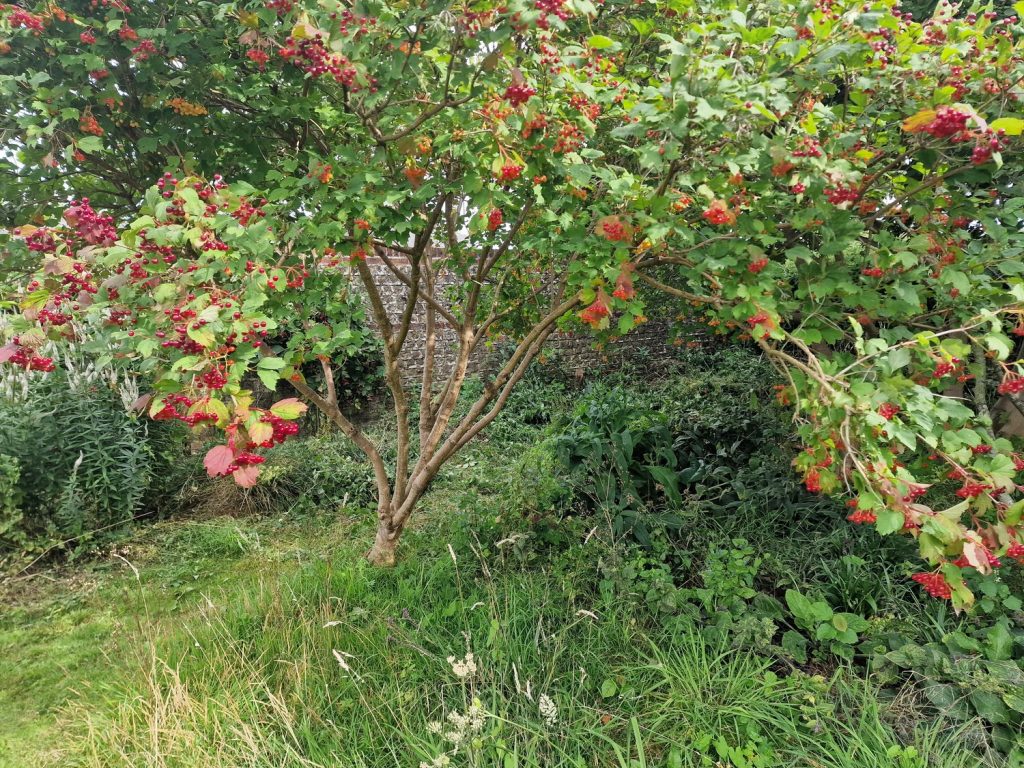
A part of the beauty of a woodland edge garden is that they are productive. They can give fruits, nuts and berries (in which case they are a food forest), mulch materials and wood. You can see in the pictures below, the poles I have pulled out of the area which were cut last winter from the hazel mentioned above. The straighter sections will be used as poles in the garden, the rest cut and used in the woodstove once seasoned. The woodchip made from previous pruning I have spread onto the path and planting.
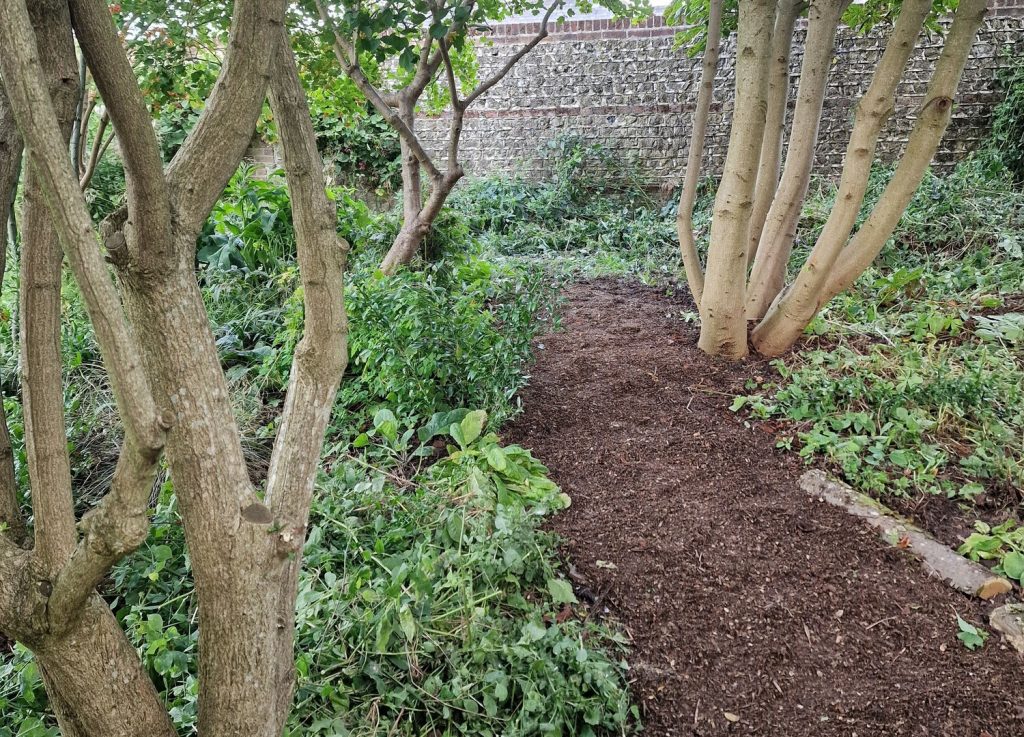
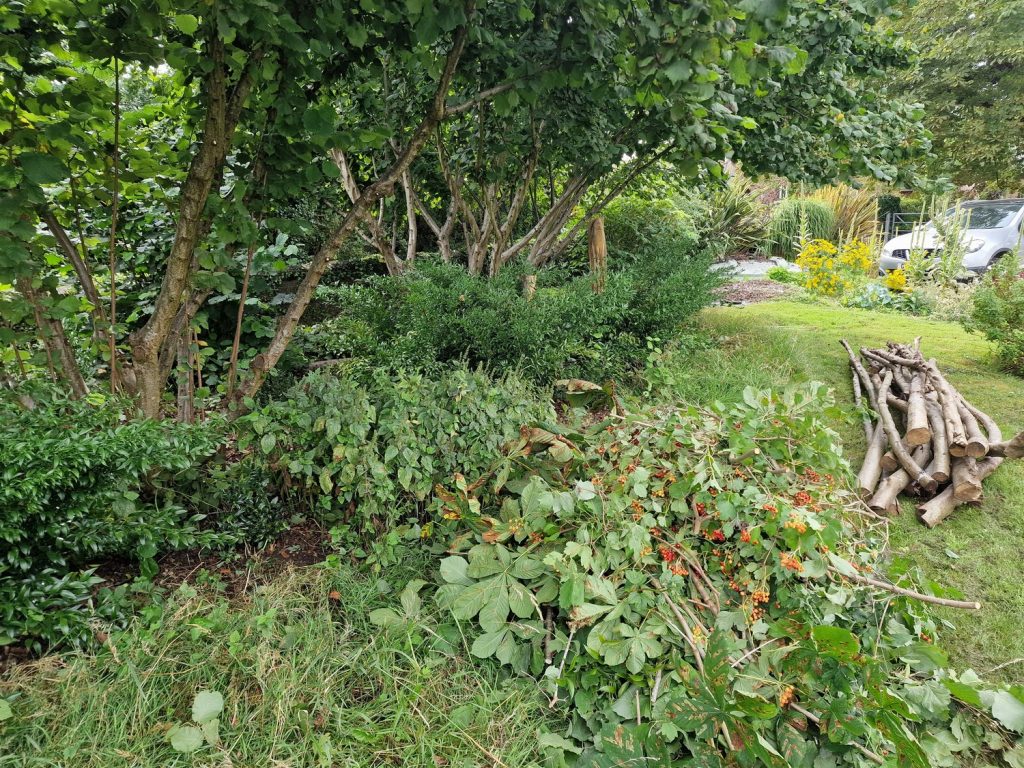
This cutting process keeps the environment dynamic; disruption is an important part of a heathy ecosystem. So many gardens and parks become static and the ecosystem or biome of that area is therefore poorer because of it. Disruptions brings changes of light, moisture levels and nutrient availability, which all create opportunity and diversity of flora and fauna.
As I have written elsewhere, I encourage fungal diversity in the garden, which is an essential part of ecosystem health and of encouraging diversity. To this end I place my ‘Deadwood Art’ pieces around, to give habitat to saproxylic insects and fungi. See my previous article on this subject and the sculpting service I provide. These wood-art pieces remind us that this is a garden and is a place of aesthetic beauty, as well as a wildlife habitat!
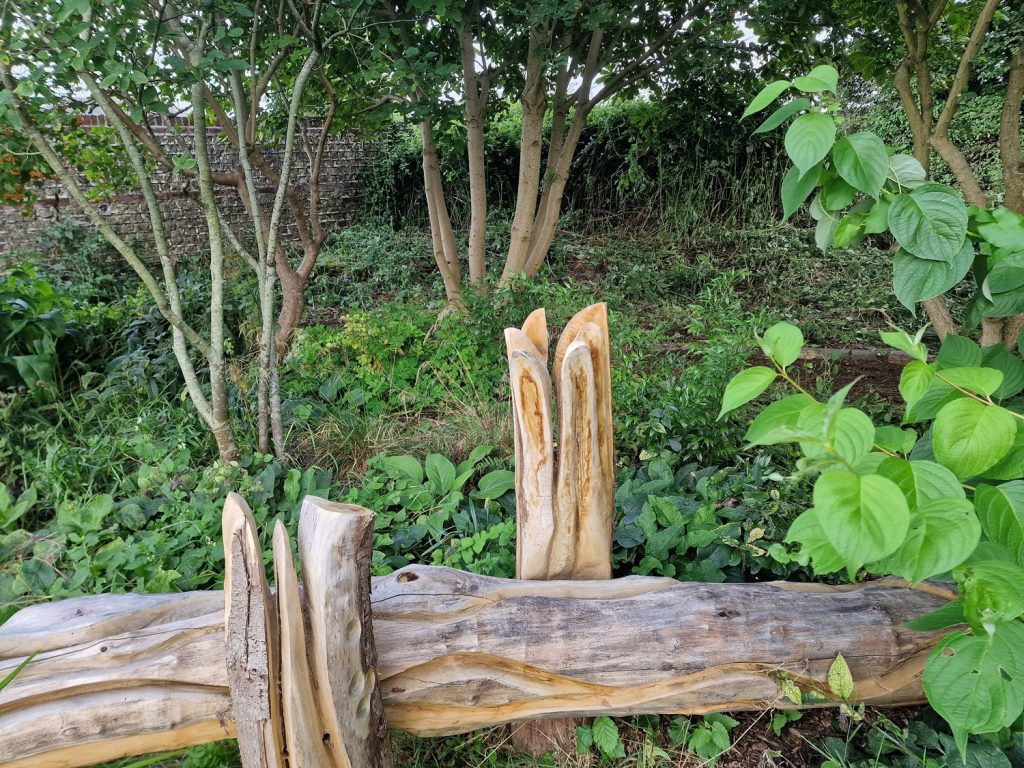
If you would like help with creating a woodland edge garden, or are interested in commissioning a piece of deadwood art, do get in touch!
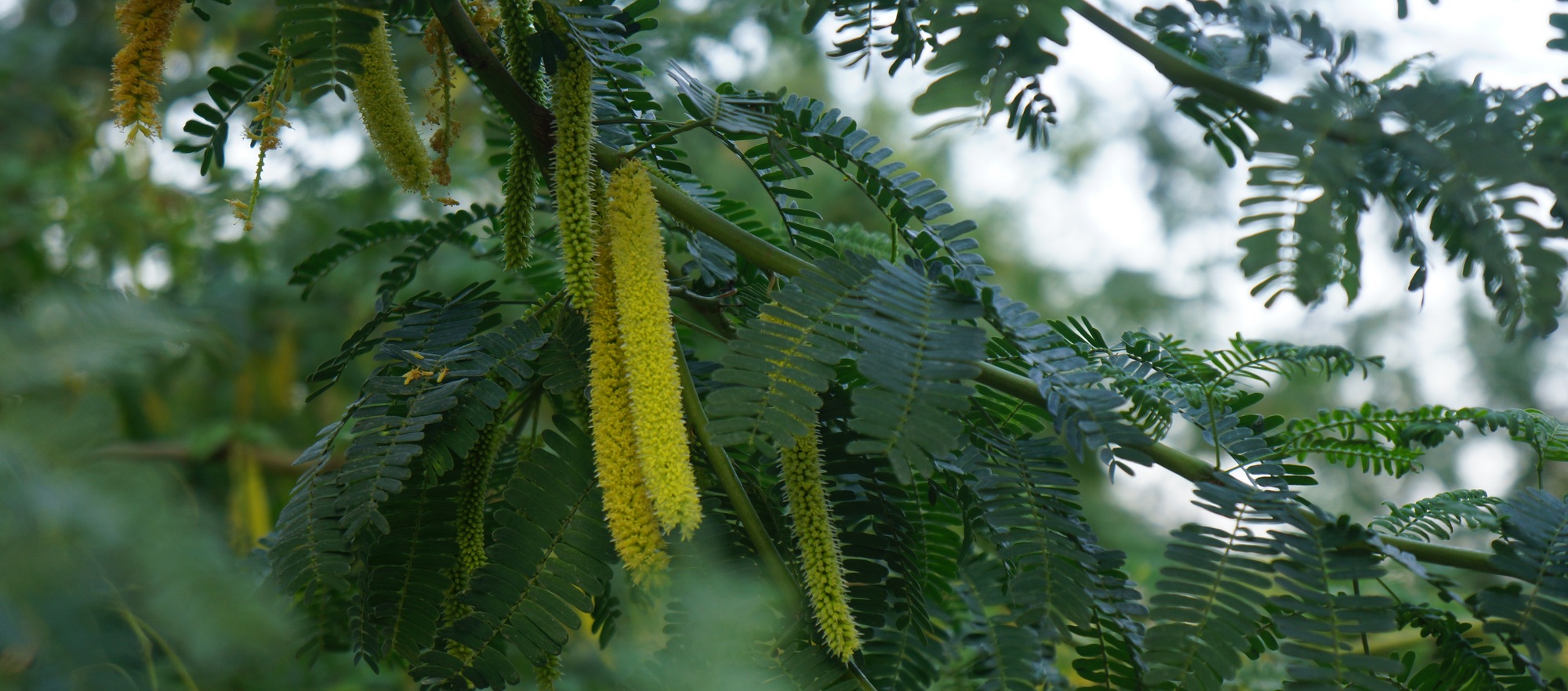
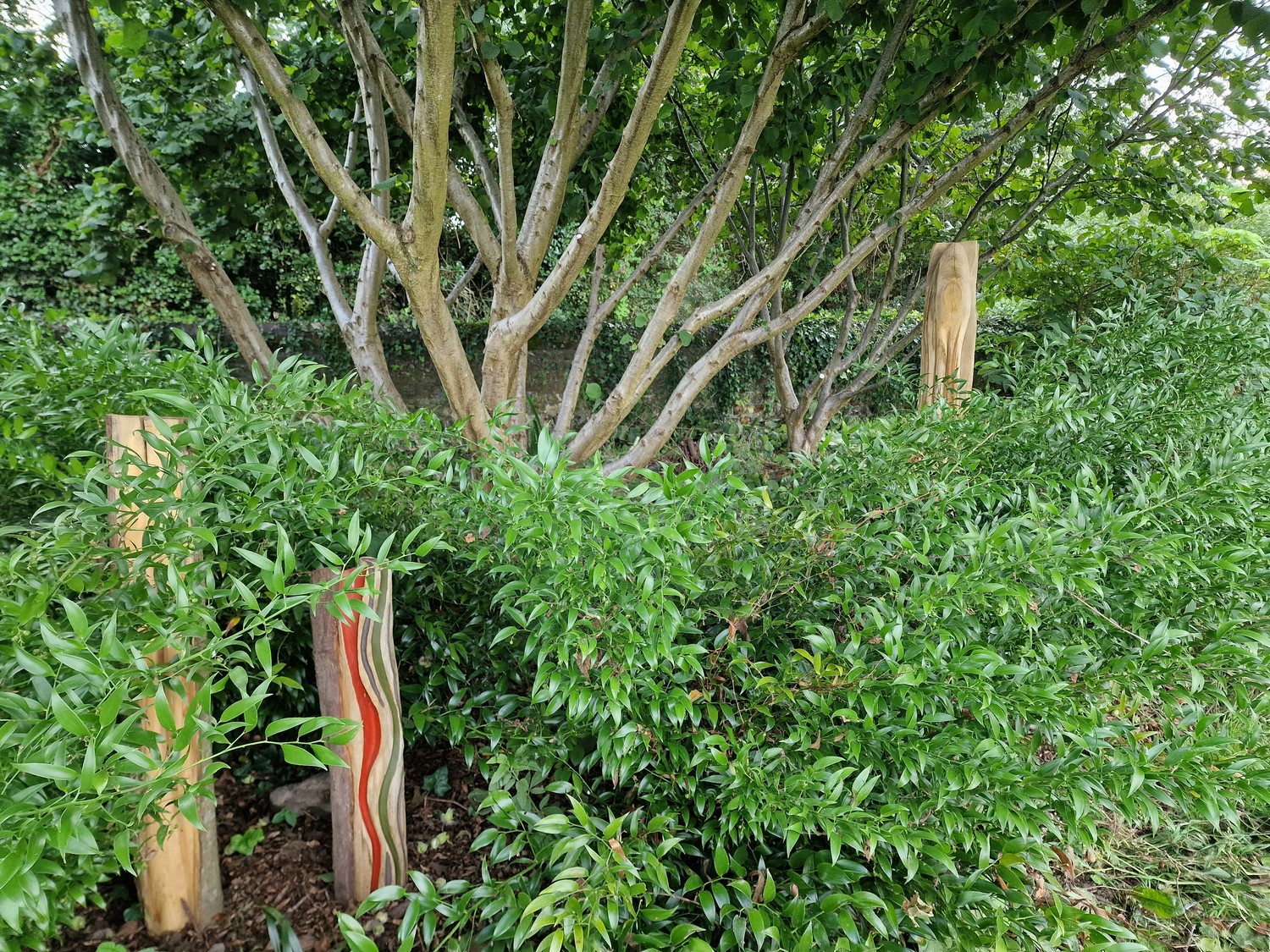
What an insightful article, Mark! I’ve always been fascinated by woodland edge gardens, and your tips on summer pruning are incredibly helpful. One additional tip I’ve found useful is to stagger the timing of pruning for different tree species in your garden. This can help ensure that there’s always a variety of plants in different growth stages, providing year-round interest and habitat for wildlife.
Thanks,
Al Gardener